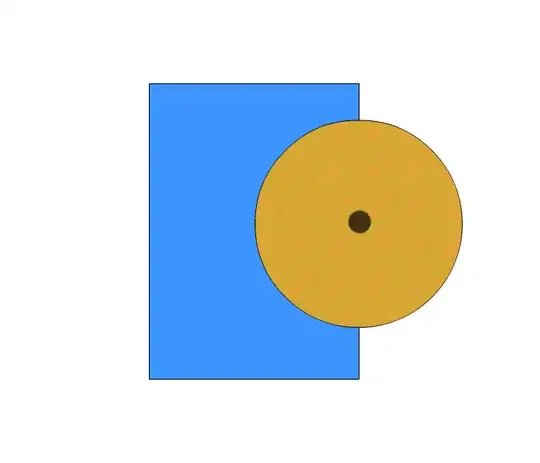I have made a plan for a perpetual motion device, but I am sure that it won't work because otherwise the world would be relying on it right now. I know that perpetual motion defies the laws of physics.

The blue represents a container of water, the brown wheel is made of wood, halfway into the water.
Half of the wheel is in the container of water, and half is not. This seems like it should work to me (a complete noob at physics), because the part of the wheel that is in water will always try to float upwards, and the side outside of the water will be pulled on by gravity and try to fall downwards.
Assuming that we found a way to not let any water leak out of the container, why wouldn't this work? Extra credit to anyone who can make a explaination without using equations or complicated terms, so I (a noob) can understand. Thanks!!
NOTE:
This question is different from the one it is marked as duplicate of because that one has an answer that is explaining to someone that has experience with physics, whereas I have none. Also, the main question of that question is about Buoyancy, whereas mine is about the machine itself.